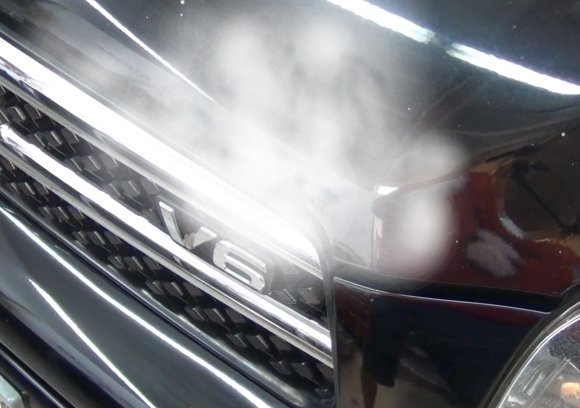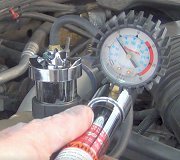A head gasket is not a do-it-yourself project. The bolts must be torqued to very specific values and in a certain order, a little at a time. Tightening one bolt all the way on the first pass will often result in a warped head that must be replaced. Surface prep is critical to helping the new gasket bite into the metal surfaces.
The leaking thermostat housing is usually caused by not cleaning off all of the old gasket. Most mechanics use air tools with Scotch Brite pads or wheels with plastic fingers to shine up both surfaces. I like to add a taste of silicone gasket sealer to both sides of the gasket for a little insurance against leaks and to make the gasket easier to remove next time. Just a little; you don't have to snobber it all full.
The fluctuating gauge is from using a universal aftermarket thermostat. I had the same problem on my '88 Grand Caravan. Your original thermostat had a small bleed hole in it. You can put one in your new thermostat with a 1/16" drill bit. The temperature sensor for the dash gauge and the thermostat are a little ways apart. As the coolant warms up, the higher temperature reaches the sensor first and the gauge goes up. Eventually it reaches the thermostat so it opens up allowing coolant to flow. Cold coolant comes rushing in from the radiator which causes the gauge to go down and the thermostat to close again. Then the process starts all over. Eventually it will smooth out and the gauge will read normally. With the bleed hole, hot coolant will have an easier time moving over to the thermostat so it will open before the gauge goes too high.
A leaking head gasket doesn't always cause running problems. Engines tend to run very smoothly in the rain due to the moisture in the air slowing the burn rate of the fuel. Instead of a quick "pop" of the fuel, it burns evenly and for a longer period of time. Coolant will do the same thing. Plus, ethylene glycol is, ... Uhm, ... Alcohol! What you will find is the spark plug and combustion chamber that has the leak will be much cleaner than the rest of the engine.
To test for a leak, your mechanic will use a special tool placed over the radiator. In your case, placed over the overflow reservoir. Air is drawn through a glass tube that has two chambers filled with dark blue liquid. If combustion gases are getting into the cooling system, the liquid will turn bright yellow.
Combustion gases will also cause air pockets in the cooling system. That will cause loss of flow though the heater core. It can be intermittent, and it can cause air bubbles to appear in the reservoir that mimic overheating / boiling. The clue is lack of steam and the coolant is cool.
Caradiodoc
Sunday, January 10th, 2010 AT 4:43 AM


